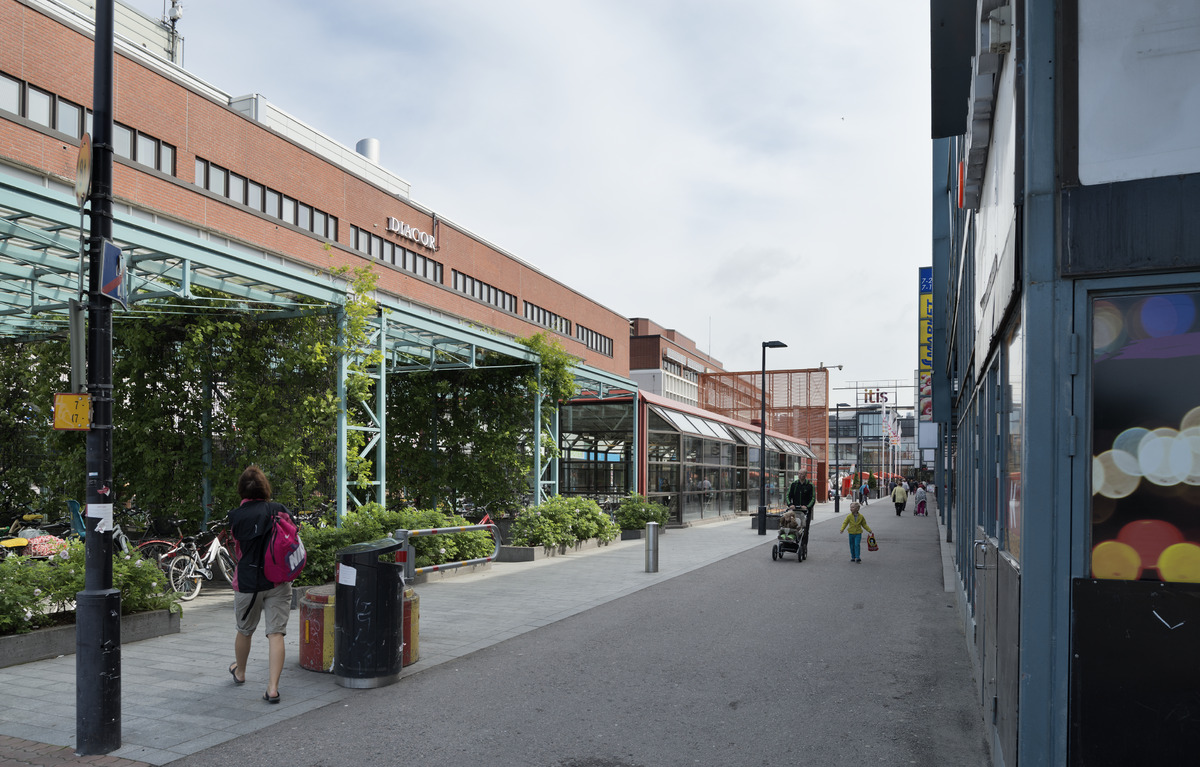Written by Eurídice Hernández
How to find a home far away from home? Since I moved to Finland, this unsolved question has been haunting me. Where to find the coziness of a hug, the organized chaos that makes me feel alive in the middle of the dark and cold winter? I am far away from finding the answer. Actually, there is no correct answer; it is more of a process, a constant search to find where to belong in the city. To discover the trim and hidden places that bring me that familiarity. A familiarity can come from hearing a word in your language, from a spice that reminds your favorite dish, a smell that brings you to a restaurant you know, or sometimes just the hustle that brings you back to your hometown.
Belonging is not only connected with ethnic ties; it flourishes through the individual experience marked by several social markers such as gender, generation, class, and nationality. It is about finding a location that can be “experienced through identification, embeddedness, connectedness, and attachments”( Pfaff-Czarnecka, 2013, p.4). Belonging is by nature an individual experience, but it is socially negotiated that aims to find spaces that can become more familiar, intimate, and valuable, being converted, in the end, into a place (Tuan, 1977).
Ethnic retail shops have been this place for me- an oasis in the city; I find the familiarity and elements that help me belong to Helsinki. In Hakaniemi, I find vegetables that remind me of my grandma’s food; I can get ingredients to make my favorite Brazilian dessert, and if I visit the Brazilian market, I can even have a coffee for a couple of minutes and talk in my language. For me, ethnic markets and restaurants in Helsinki bring the possibility of getting closer to home; they are a portal to a place where all the migrant customers share the same search- the search for our space in this new country. Inside the wall of the retail ethnic markets, someone can take a rest of this journey around things that are familiar to them. When I was allocated to visit Puhos, I got excited; it was the chance of me going to a new area with other ethnic retailers and seeing if the feeling I had about ethnic retails in the city would be the same.
Puhos is a shopping mall area dominated by ethnic markets and retailers, but I had never been there before the field exercise. On my way to Puhos, I reflected on the reasons for it. I frequently go to STOA and the library but never wondered what was behind STOA. It was like an imaginary wall prevented me from exploring the area. This can come from the way I perceive Helsinki. Unfortunately, apart from Hakaniemi streets, my life orbits around shopping malls, and in Itäkeskus, I was going to Itis. It never crossed my mind that another one could exist. Then, it comes the second point, differently from Hakaniemi and Kontula shopping malls, no one I know ever mentioned going to Puhus, so that place remained unlocked for almost two years.
On the day of the field trip, I went there with my Brazilian friend; always good to have someone familiar when you go to an unknown space. Here it is essential to highlight that what made me want to go with someone wasn’t the fact of being afraid- there is no place in Finland where I feel unsafe- it was to avoid eventually feeling out of place and attracting too much attention. I searched the site and read the article beforehand, so I knew that the area was the hanging out spot for specific groups, and I did not want to feel like an outsider alone.
Arriving at the place, I could notice that it was not only my ethnicity and, eventually, race that could matter in that place; my gender and what I was doing there would also influence that. At the first spot, I stopped to write on Flinga; I felt several eyes looking at me, men’s watches. I did not feel insecure, but that was not my space. I felt like an intruder in someone else area. On the walls, I saw advertisements for sending money back home, which is not a need for me; many words were written down in languages I didn’t understand; it was not my space… There it was highlighted the “difficult to establish identificatory ties with those from very different histories and places” (Nast, 1994, p. 4). But then I felt a pleasant smell. From one of the restaurants in the area- I could not discover which- a familiar smell made me smile, even though I was already freezing.
The smell of nice food made me want to stay longer and visit the ethnic markets, and inside them, I had the same pleasant surprise of finding products that I missed, and I even found the ingredients for my dessert- cheaper. In Puhos, I understood my positionality in a space of betweenness; I was not an “outsider” but also not an “insider” differences are part of the urban realm, and in Puhos, I had to negotiate various kinds of them- based on gender, ethnicity, race, and class, but still in some corners, behind some market doors, I felt at home. Eventually, this is why food is essential for Brazilian and Latin American culture; it makes people connect with their emotions.
References:
Nast, H. J. (1994). Women in the Field: Critical Feminist Methodologies and Theoretical Perspectives. The Professional Geographer, 46(1), 54–66. https://doi.org/10.1111/j.0033-0124.1994.00054.x
Pfaff-Czarnecka, J. (2013). Multiple Belonging and the Challenges to Biographic Navigation | Resources Library | ISA Sociology. https://esymposium.isaportal.org/resources/resource/multiple-belonging-and-the-challenges-to-biographic-navigation/
Tuan, Y. F. (1977). Space and place: The perspective of experience. U of Minnesota Press.
